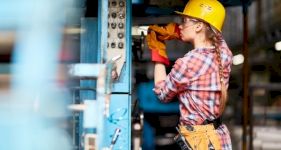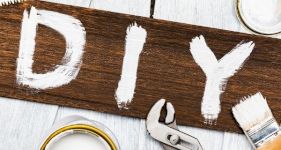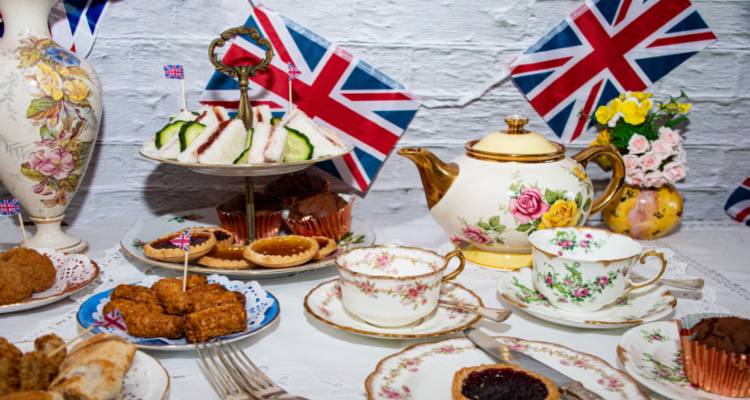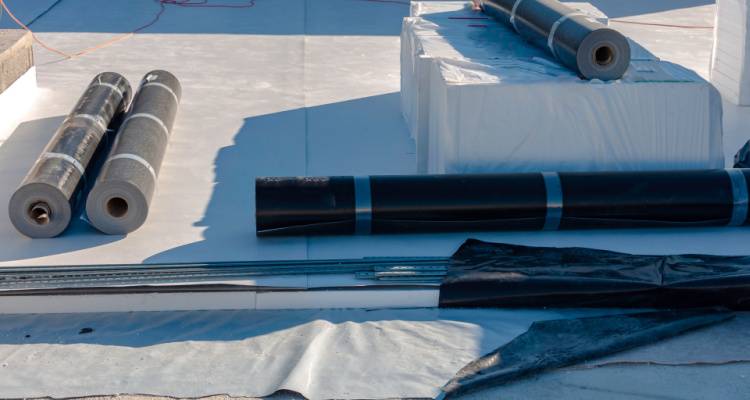Preventing Senior Home Injuries
As we get older, it is ideal to maintain as much independence as we can. However, this doesn't come without its challenges and home injuries are a significant issue for seniors to deal with. Whether you're an OAP or a carer, friend or relative of a senior citizen, the following article will equip you with the necessary knowledge to avoid in-home injuries for seniors.
In our guide, we're going to break down a list of common injuries and look at how you can prevent injuries in different rooms as well as in gardens. This article will prove very useful if you wish to learn the important safety steps and measures that can be taken to improve home safety for seniors.
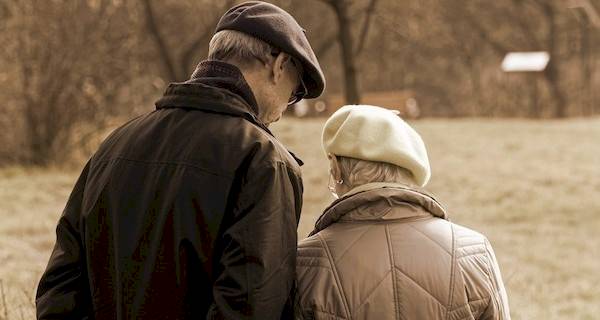
Contents
Common Injuries
There are many potential injuries which seniors and those concerned should be conscious of and take measures to prevent. In this article, we'll look at some of the most common injuries, explain what they are, how they can happen and why seniors are more at risk of suffering such injuries. Once we've laid out the details of these injuries, we'll explain how you can better ensure safety throughout a property in order to prevent these injuries in the first place.
Falls
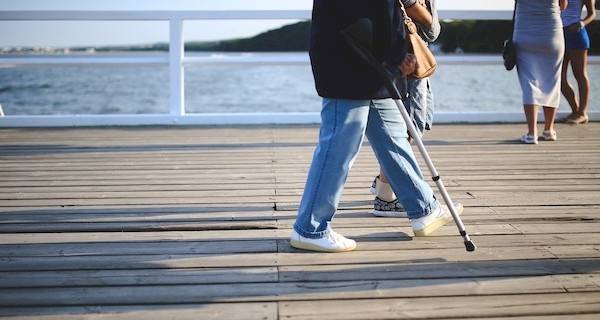
The most prevalent reason for home injury among seniors is falling. In fact, in the UK, falling is the most common cause of injury-related fatalities for those aged 75 and over. So it's essential that caution is taken to prevent this from happening in the first place. Falling from standing height can lead to serious injury or even death. So the fall needn't occur from a particular height.
Possible causes of falling among the elderly include;
- Rushing around (such as when in need of the loo, to answer the door etc.)
- Going down the stairs
- Undertaking DIY work, particularly if on a ladder
- Tripping over objects on the floor
- Reaching up (such as to cupboards)
- Uneven surfaces or floors
- Furniture that is not stable
- Poor lighting
- Wet, recently polished or slippery floors
- Insecure carpets or rugs
Of course, anyone could fall due to the reasons mentioned above. However, as we age it's important and perfectly okay to recognise that these risks increase. This is natural and will be true for everyone who reaches these years of their lives. Muscle weakness, issues with balance and poor eyesight can significantly increase the risk of falling. Chronic health conditions are another big reason why seniors are more at risk of fall-related injuries.
These conditions can include dementia, hypotension, heart disease, diabetes, chronic kidney disease and osteoporosis. This is largely due to how these conditions could affect balance, concentration or a sense of direction. In the case of dementia, panic or for instance, rushing around from confusion could also result in falling. If we're being more specific, many types of named injuries can be caused by falling. This can include internal injuries (which can lead to internal bleeding), fractures and bruising.
Choking
Another common danger for those in their retirement years is that of choking. As you already know, this is when airways become blocked by food particles or another object. In the case of a partial blockage, the choking victim will still likely produce sounds such as from coughing or gagging. However, if the person's airway is fully blocked, they won't be able to get any sound out whatsoever.
These are some of the reasons for choking;
- Eating too fast
- Talking or laughing while eating
- Moving around whilst eating
- Swallowing too much food at once
- Foreign objects being lodged in the throat (e.g. if someone tries to open a tight bottle lid with their mouth or tear something off with their mouth)
Choking is a bigger risk in older people since they have less saliva meaning that chewing and swallowing food can prove more difficult. Aged teeth or fewer teeth than they had in their younger years can also mean larger pieces of food being swallowed and in turn, an increased risk of choking.
Burns
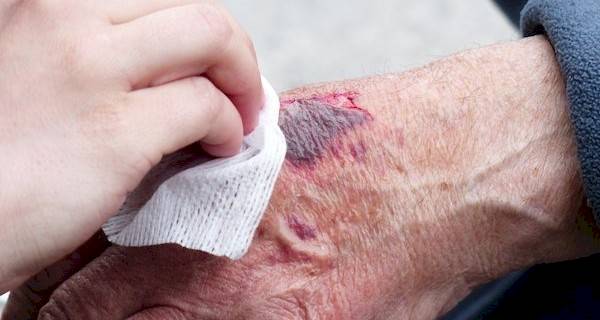
In the UK, the second most common explanation for in-home injury is burns. Elderly people have a higher fatality rate if they suffer burns since their bodies do not cope as well with burn treatments. Burns are scientifically speaking, tissue damage that is caused by heat, and this can include from scalds which are a common reason for burn marks among seniors. Kitchen appliances and utilities which malfunction is a prominent reason for seniors suffering burn-related injuries.
Here is a more comprehensive list of how burns can occur in the home;
- Smoking cigarettes, cigars, etc.
- Flames (such as from cooking or if a house fire takes places)
- Scalds (can result from boiling water in pots or from kettle water for e.g.)
- Touching hot surfaces (e.g. stoves)
- Electrics
- Heater problems
- Sunburns
- Chemicals
Flames and scald marks account for a large proportion of burn incidents in the elderly. Those who have poor vision or memory issues have a greater risk of suffering from burns as a result of accidents which may or may not involve actual house fires. Beyond that, some seniors have conditions like peripheral neuropathy which impacts on the brain's ability to detect suffering. As a consequence, individuals can suffer from burns without fully realising it or even recognising it at all. Mobility issues, a slower reaction, coordination issues, general cognitive decline, medication side-effects, other sensory impairments and even smoking contribute to the increased likelihood of the elderly to suffer from burn injuries.
Hematoma
We've looked at falling as one of the biggest risks that the elderly should be conscious of. However, there are many injuries which may or may not result from falling. Hematoma is one of them. Officially known as chronic subdural hematoma (SDH), this involves blood pooling on the surface of the brain and is generally the result of minor trauma. So this could be the result of falling but banging one's head off of a surface of some kind or being struck on the head an object can also lead to hematoma. Seniors are more vulnerable to hematoma, in part because of any conditions or age-related fragilities and impairments, which could lead to a minor head trauma but also because of brain tissue shrinking as people get older. It is not unheard of for this injury to be mistaken for other diagnoses whether it be a subarachnoid haemorrhage (a rare form of stroke) or a tumour.
Head Injuries
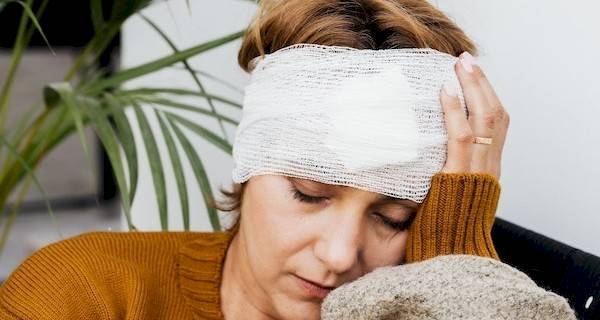
SDH is a particularly prominent head-related injury that the elderly should be aware of, but there are many other head injuries that, again could result from falling, banging one's head off something or being hit on the head by an object. Firstly, intracranial haemorrhage is a head injury whereby blood vessels inside a person's skull leak or rupture. While physical trauma can be the cause, so can non-traumatic incidents such as in the case of a ruptured aneurysm. If a person hits their head or it is struck severely enough, it can result in a traumatic brain injury or TBI. This can result in brain damage or prove fatal. Then, there is also the possibility of a concussion which once again can occur for the same reasons as the prior two mentioned types of head injuries. Various chronic conditions such as osteoporosis and the many others mentioned in the ‘falls' subsection can increase the risk of head injury for an elderly person.
Dislocated Joints
While spraining can be painful, the dislocation of a joint is a more serious injury. It involves the ends of a person's bones being moved from their natural position forcefully. This can lead to temporary deformations in a person's joint and immobilisation of the joint. Shoulders and fingers are particularly common places where dislocations occur. In the case of shoulder dislocations, this will often result in rotator cuff tears. Among the elderly, hip dislocation is another serious injury risk. Possible reasons why a senior may suffer a dislocation include falling, bashing into something, being struck by an object and forms of physical movement. Cases of dislocated joints are higher among seniors because of ageing, physical health conditions making their bodies more prone to damage.
Sprains
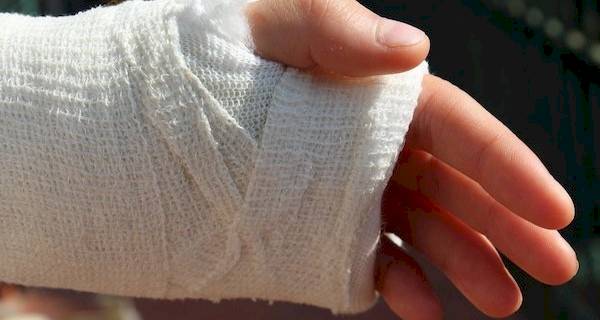
A sprain is the twisting or violent jolting of ligaments of a joint such as a wrist or ankle. If your joints move in an unnatural way whether from taking a wrong step, falling, landing on a joint the wrong way or bashing into something. Mobility issues and conditions that can affect movement, coordination and physical strength can all make seniors more at risk of spraining a joint.
Lacerations
Cuts or tears in the flesh or skin are also known as lacerations. The use or presence of sharp objects, falls, unstable surfaces and impacting with or being struck by objects are common causes of lacerations for elderly individuals. An open wound is categorised as one where underlying tissue is exposed, which is of course, a more severe type of laceration. With increased fragility and a variety of potential health conditions, the older we are, the more likely we are to fall. It's essential that cuts in an elderly person are treated as quickly as possible.
Fractures
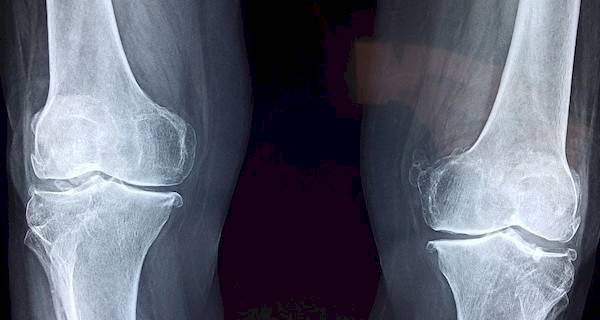
We looked at joint dislocation earlier. Another type of bone-related injury which the elderly are more at risk of is fractures. This refers to a break in the bone itself. In scenarios where a broken bone actually punctures a person's skin, it is considered an open fracture (also known as a compound fracture).
Some of the fractures that the elderly are particularly vulnerable to;
- Hip fracture
- Wrist fracture
- Rib fracture
- Pelvis fracture
- Vertebral fracture
- Ankle fracture
- Patellar fracture
- Skull fracture (often associated with a concussion)
- Clavicle fracture
- Finger fracture
Fractures can result from falling, bashing into or being struck by something or even from just moving in the wrong way (e.g. when exercising). As mentioned in many of the previous subsections, reasons why the elderly are more likely to experience this kind of injury is in relation to the likes of ageing, physical health conditions and coordination or balance issues caused by health conditions or syndromes.
Bedsores
Also known as pressure ulcers, bedsores are deemed as skin or underlying tissue injuries which generally result from continued pressure applied onto the skin. Friction and shear are also prominent causes of bedsores. OAPs are more likely to experience bedsores because of mobility issues, skin that is more prone to damage such as through dehydration and as a result of conditions that the elderly are more likely to have.
Preventing Injuries in the Home
Now that we've looked at the causes of common senior home injuries, we'll now look at why it's important to prevent injuries at home, how it can be achieved and in what ways such steps can support the health and safety of senior adults. We are breaking down these senior safety tips based on rooms of the house as well as looking at injury prevention measures for a garden.
Bathroom
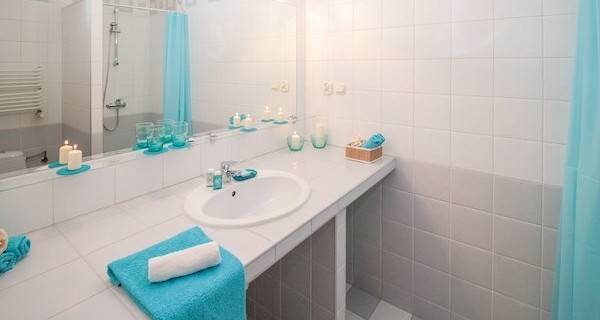
One of, if not the most injury-prone rooms in the house is the bathroom and this is particularly true in the case of the elderly. Thankfully, there is plenty that can be done to make it a safer place.
1. Add Bath or Shower Mats
Non-slip bath or shower mats are a great way of reducing the risks of slips or falls. This is particularly true for tiled bathrooms as tiles with water can make for a very slippery and dangerous surface. By adding these mats, the risk of slipping can be significantly reducing. Old bath mats and rugs can actually be dangerous if they do not have non-slip features.
2. Improve Lighting
The better the lighting, the easier it is to see what you're doing. As a result, a senior, especially if they are poor vision will have an improved chance of seeing exactly where they're going, where to walk or land their feet (such as if getting out of the shower) and if anything is on the floor that they might slip or trip over. Having strong overhead lights, good task lighting and high-quality accent lighting can create a bright and highly navigable environment. Additionally, the main light switch should be easy to access once you enter the bathroom. Having automatic nightlights as an extra type of lighting can also be helpful.
3. Hot Water Safety
It's also important to consider the risk of hot water scalding, and as mentioned in the previous section, this is particularly true for the elderly due to their skin being more delicate and thin. This means that an elderly person may not recognise water that is too hot as quickly as those who are younger. It's essential that taps are well labelled. Ideally, water temperatures should not surpass about 38°C and not drop below 36.7°C. This may be achieved by having a carer, friend or relative around to be on standby should anything go awry. Steps should be taken to ensure that the shower won't suddenly change temperature. A pressure-balance shower valve or a thermostatic valve can be used to keep the temperature stable and pleasant. It is best to hire a contractor to perform this work.
4. Install Handrails
Handrails are an essential way for the elderly to get around a bathroom and are a great example of bathroom safety equipment for seniors. Safety handrails for the elderly can be used to get in and out of the shower/bath and to sit down on and get up from the toilet. They can also prove vital should an elderly person fall, so that they have something to grab onto.
5. Fitting a Shower Chair
The purpose of a shower chair is to offer dependable support in a shower. It can also be used in a wet room. By adding a shower chair, it means that a senior citizen can avoid standing up while showering, thus increasing their safety by bringing down the risk of falling/slipping.
6. Toilet Safety Frame
Similarly to handrails, a toilet safety frame can make it easier for an elderly person to safely sit down on and stand up from the toilet. These are also known as toilet surrounds. A commode is a similar toilet aid which is a safety-based toilet seat. Raised toilet seats can have similar safety benefits.
7. Checking Height of Bathtub
While old fashioned bathtubs such as those with antique footing or clawed feet can provide a luxurious look, the taller a bath is, the more difficult it is for an elderly person to get in and out of. If this poses an accessibility or safety risk, a small safety step stool for an elderly person or tub transfer bench could be installed to make it easier. Of course, if you can afford it, purchasing a walk-in tub is the best solution for bathtub access.
Bedroom
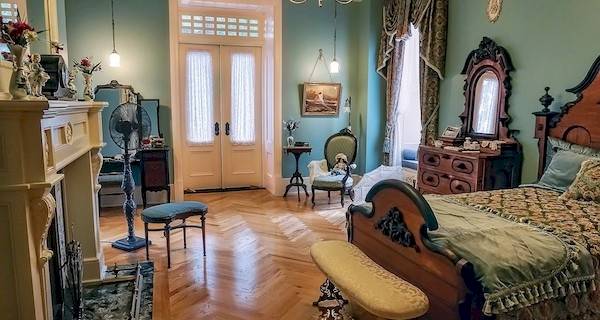
Now, we'll have a look at what safety steps can be taken to reduce the risk of senior injuries in a bedroom.
1. Enhance Lighting
Once more, the better the lighting, the less likely injuries are to occur. Of course, with the potential for clutter and more obstacles, the risk of bashing into something or tripping over an object is possibly greater in a bedroom than in most rooms. With solid general, task and accent lighting, a bedroom can be made into a safer place for a senior individual. Again, having the light switch right by the door can be beneficial for safety also.
2. Closets
It's also important to ensure that closets are easy to reach. Having them well organised can also be helpful as the messier a closet is, the more moving around and reaching for items will be involved. The easier things are, the less likely any injuries are to occur. Safety step ladders for seniors can also make reaching things in the kitchen easier should they need to reach anything that is too high up.
3. Bed Frames
When it comes to bed frames, there are many safety-oriented options worth consideration. For instance, there exist single and double electric adjustable beds which can improve comfort and provide a safer and physically healthier sleeping environment for seniors. Next to a bed, there could also be bed safety rails for elderly people.
4. Mattresses
The actual mattress itself can also be an important factor when it comes to the physical wellbeing of seniors. A high-quality mattress can not only mean more comfort, but it can reduce the risk of strains and pains that could, in turn, increase the danger of more serious injuries. It's also important to find a mattress with minimal toxic ingredients.
5. Nightlights
While lighting is important all around, having nightlights and particularly motion sensor ones for walking around the house at night is vital in maximising bedroom safety. This should be turned on before turning off the main light.
6. Removing Clutter
Obviously, a notable hazard that could arise in a bedroom for an elderly person is that of clutter. Keeping a room clean and clear of objects on the ground can make it easier to navigate the bedroom and reduce the danger of tripping or falling over anything.
Kitchen
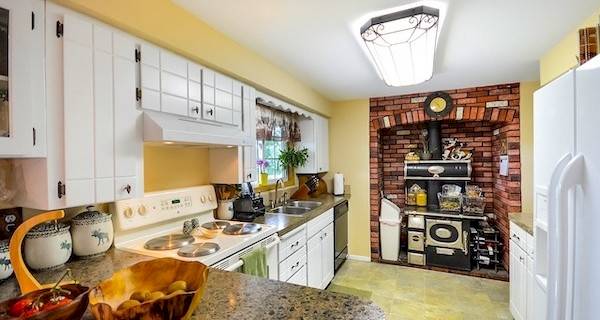
Now, let's move on to safety around the kitchen.
1. Lighting
The same lighting recommendations apply for a kitchen as they would for a bathroom or bedroom. However, it's also important to consider lighting above the stove and to ensure that the general lighting covers the entire kitchen, particularly if it is a large space. Again, the light switch should be near the door.
2. Pull-Down Shelves
These shelves are generally senior-friendly since they avoid the need for overreaching and reduce the risk of falling or straining.
3. Auto-Oven and Hob
It is safer to have automatic ignition for the oven and hobs which tends to come with a cut-off safety feature to stop the flow of gas.
4. Moving Heavy Items
Generally, a senior citizen should avoid carrying heavy items. A professional carer, friend or family member can help with this by either carrying the items themselves (if it is safe to do so) or carrying them with one or more people.
5. Labelling Leftovers
If there is leftover food, it should all be labelled with what it is and its date of expiry or when it was put away in a box/container. The purpose of this is to ensure that no food is consumed after its expiry date, or an elderly person does not consume types of foods that should not go together for health reasons.
6. Making Simple Meals
The simpler a meal, the safer it generally should be. This is because it'll be easy for a person to identify exactly what they're putting in their mouth thus reducing the risk of choking.
7. Dishwasher
There also exist OAP-friendly dishwashers. Such designs are easier to use, less fiddly and reduce the need for an elderly person to move around, bend etc. if turning the dishwasher on.
8. Fire Safety
Some of the best ways to ensure fire safety for a senior person at home is by ensuring that no cooking is left unattended, handles of pots and pans are turned inwards when cooking and the pots, pans and other cooking tools and utilities are light and easy to use. Pots and pans with two handles are also ideal. Other ways to reduce fire risk in the kitchen is by keeping surfaces clean, avoiding clutter and being conscious of clothing (e.g. loose garments that could make contact with a hob). It's also very important to have fire safety equipment somewhere in the kitchen and in a spot that is easy to grab and won't act as a falling/tripping hazard in itself. A small fire extinguisher and smoke alarms which are regularly checked for their functionality are all important. It is also ideal to have a fire blanket in the kitchen. Carbon monoxide alarms are also essential.
Living Room

There are also many safety considerations when it comes to a living room.
1. Lighting
Once more, top-notch ambient, task and accent lighting should be employed and the light switch should be right next to the door. If there are lamps in the living room, it's important that they are not too close to fabrics such as that of any curtains as this can prove a fire risk. Remote-controlled smart lighting may be a good idea if the person likes for example, to watch movies with the lights off.
2. Seating
For safety reasons, sofas and chairs should be completely stable without any wobble or sway. Seating should not be too deep, low or soft, it should contain high arms, ideally be lightweight and the front of the arms should also be flat so that it can be grabbed with ease. You should also consider safety chairs for the elderly.
3. Decluttering
As with any other room, clutter should be kept to a minimum and strongly consider removing any rugs which depending on their quality, design, etc. could prove dangerous, especially if on floorboards.
4. Windows
Window restrictors are a great way of ensuring that an elderly person can open a window without the risk of falling out since it'll prevent a window from opening fully. These are an example of popular home safety products for seniors.
5. Temperature/Heating
Reliable and high-quality heating should be used to ensure that the right temperatures are maintained in the house. For an elderly person, room temperatures should never drop below 18°C.
6. Flooring
Tiling or wooden flooring can be slippery, but cork, carpet and vinyl flooring are among the safest options on the market for the elderly.
Garden
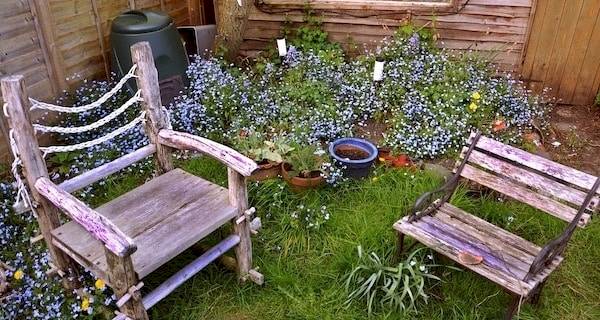
Lastly, let's see what can be added to a garden to increase safety. The following ideas can apply to a front or/and back garden.
1. Paths and Walkways
Either roll out pathways or non-slip paving can be used to make walking about a garden a safer experience for a senior citizen.
2. Motion Sensitive Lighting
This type of lighting is not only good for the purposes of home security, but motion-sensitive lighting will light up a back garden at night if an elderly person needs access to it.
3. Gardening Tools and Equipment
There are plenty of gardening products out there that are better designed for the elderly such as ergonomic pruners, hand weeders and hoses. Other tools and equipment worth considering are weed grabbers that require no bending, garden kneelers and UV protective hats.
4. Doorbells
A garden doorbell makes it easier for an elderly person to alert a carer, family member or friend who is inside the house if they require any assistance or want them to head out into the garden for any particular reason. Safety alarms for the elderly are an idea worth looking into for the various rooms of the person's home.
Conclusion
We hope you enjoyed our guide to avoiding senior home injuries by enhancing senior home safety. We've looked at common injuries that elderly people can suffer from and ways in which a property can be prepared and improved to make a home and its garden as safe as possible.
From bedsores to head trauma, injuries are more prevalent among the elderly, so it's very important to do what needs to be done to avoid injury and in some cases, even death, in the first place. In this article, we've given you the necessary information to start an effort to minimise the chance of injuries occurring in-home!
Sources
https://www.nhs.uk/conditions/falls/
https://www.careline.co.uk/common-home-injuries-elderly/
https://www.ncbi.nlm.nih.gov/pmc/articles/PMC5387801/
https://www.nigms.nih.gov/education/fact-sheets/Pages/burns.aspx
https://www.medscape.com/viewarticle/579832_2
https://www.uptodate.com/contents/overview-of-burn-injury-in-older-patients
https://www.todaysgeriatricmedicine.com/archive/0915p28.shtml
https://www.nhs.uk/conditions/burns-and-scalds/treatment/
https://www.sunriseseniorliving.com/blog/june-2017/protecting-seniors-against-skin-cancer.aspx
https://bestlifeonline.com/common-injuries-over-50/
https://staysafe.support/choking/
https://www.buoyhealth.com/learn/choking/
https://www.cdc.gov/nutrition/infantandtoddlernutrition/foods-and-drinks/choking-hazards.html
https://www.mayoclinic.org/diseases-conditions/bed-sores/symptoms-causes/syc-20355893
https://www.nhs.uk/conditions/pressure-sores/
https://seniorsafetyadvice.com/products/kitchen/cabinets/
Last updated by MyJobQuote on 13th October 2020.

